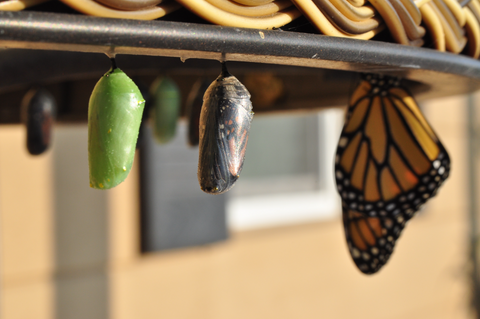A Growth Mindset Will Change Your Life

The saying, “You can’t teach an old dog new tricks,” is based on the belief that when we’re born, our brains and neural pathways are malleable—easily shaped by our experiences and environment—but harden like drying cement as we age. For many decades the scientific community thought this to be true—of animals and people alike. But, as science has progressed, they have found that that initial hypothesis was entirely false.
Neuroscience has proven that our brains are actually malleable well into later stages of life. Up until the turn of the 21st century, scientists compared the mind to a machine—running the same way every day throughout a person’s lifetime until one day it just breaks down. However, we know now that just isn’t true. The mind is more like an organism that grows and changes throughout our lives.
Our brain’s plasticity comes as a result of groups or individual neurons forming new connections. These new connections come about when a person has new experiences or learns something new. As you learn and practice more, these new connections get stronger. Myelin, a fatty substance in the brain, wraps itself around new connections to insulate them. The more we habitually reinforce the lessons, the thicker the myelin gets and the stronger our new neuronal connections are.
We can teach an old dog new tricks. We just have to make sure that we help him practice for long enough that myelin wraps around his new networks. This is great news for people who have a 10-year-old dog who still isn’t potty-trained!
Still, many of us get down when we face the difficulties of learning new skills or mastering old ones. We blame the rapidly evolving technology environment, or job competition, or lagging memories for our failings. But we don’t need to.
All we need to do is adopt a growth mindset and we can learn and grow throughout our lives.
The Growth Mindset
The idea of a growth mindset came from the famous Stanford researcher Carol Dweck. Dweck and her team stumbled upon the phenomenon when observing students and their various responses to failure. Why was it, they wondered, that some students could bounce back from a setback like nothing happened while others sulked and fumed when obstacles fell in their way?
It wasn’t the magnitude of the setback, nor the consequences of the setbacks that determined the student’s responding behaviors—rather, it was their mindsets. Some students had a fixed mindset while others had a growth mindset. The ones with a fixed mindset believed that capabilities are innate and were sure that no matter how hard they tried, they wouldn’t be able to do anything about their failures. The growth mindset kids believed that they could eventually learn to do anything if they put in effort and practiced.
We can learn a lot about ourselves through the experiences of Dweck’s students. Most importantly, that we should adopt our own growth mindset!
How to Get Your Own Growth Mindset
If you don’t already have a growth mindset, there is good news—developing one isn’t too hard. The real struggle comes down to alleviating the shame and embarrassment we feel around failure and setbacks. We all screw up. We all make mistakes. Be vulnerable, laugh it off, and keep going!
To develop a growth mindset, there are a few things we can do:
- First, we should acknowledge our setbacks or unfavorable circumstances. We don’t want to call them failures, though. Instead, think of them as learning opportunities. Marvel at the process more than the results. Jackie Joyner-Kersee, a track and field athlete and Olympic gold medalist, once said, “I derive just as much happiness from the process as from the results. I don't mind losing as long as I see improvement...If I lose, I just go back to the track and work some more.” Learn to think more like Joyner-Kersee and enjoy the process instead of simply focusing on the outcomes.
- Second, we want to acknowledge any shame that might accompany those learning opportunities. This is a key step because it alleviates lingering embarrassment.
- Next, laugh it off! You can either laugh it off by yourself, or with others. We recommend finding others who are non-judgmental and supportive who you can laugh with. This helps normalize laughing at your setbacks and helps give you perspective.
- Reflect. Reflect. If your setback took place in a business setting, make sure to take note of it so you can avoid it in the future.
Lastly, and most importantly, stay curious. If you are reading this, you’re doing a great job of that already!
Like Dweck, we can look to children to show us the way. Children’s brains are more inclined to be curious. Because they don’t have a cache of experiences to help inform them about their surroundings (and any potential dangers in those surroundings), their brain is a sponge, ready to absorb everything. Adult brains, in contrast, draw from a well of experience. So when adults encounter a new circumstance, they will simply categorize it as whatever it most closely resembles. Life is more efficient that way, but it puts us at an incredible disadvantage.
It’s how we lose our sense of wonder for the world. We stop wanting to know more and shut ourselves off to new things. We all go through periods of stagnation, but we must all remember that our brains can and will change if we put in the effort.
When has there been a time that you chose to have a growth mindset about a certain situation in your life? Tell us about it on our KellerINK Facebook page. And don’t forget to subscribe to our newsletter for other insightful articles.
